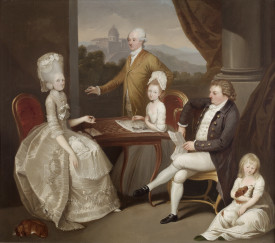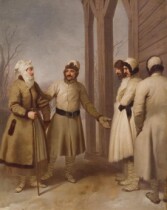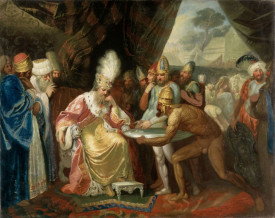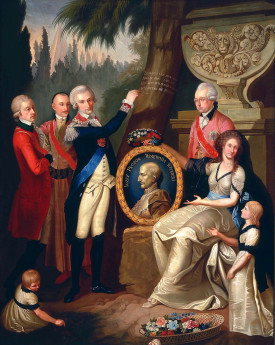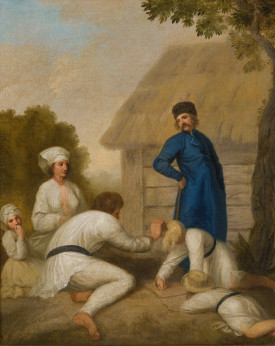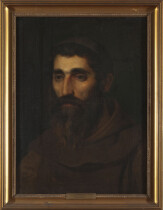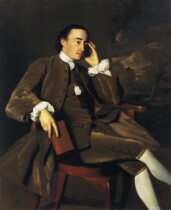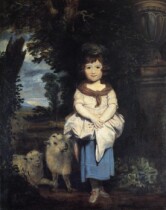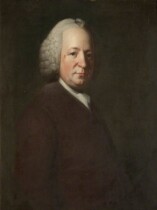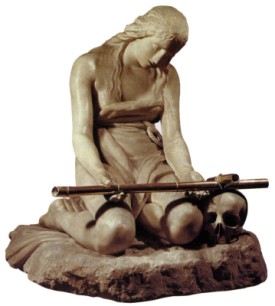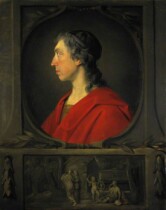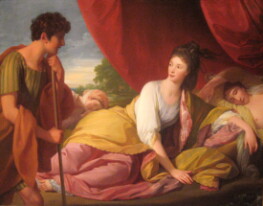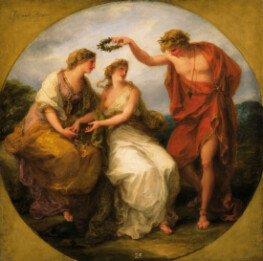Abduction of Hippodomeia
Watercolour on etching outline; paper pasted on cardboard Quadro from the Hall 27 vault decoration. One of 30 copies of the deluxe edition. At the time of publication, a single print was 20 times more expensive than the monochrome version. The outline of the etching and the work can be treated as an autograph.
In short, in The Abduction of Hippodamia, we see how a guest invited to a party (in this case a wedding) multiplies and starts to commit all sorts of mischief. This is what happened at the wedding of Hippodamia (daughter of King Oinamai) and Pirithous. Of course, centaurs are best not invited to any celebration (they cannot behave nicely).
On this occasion, Eurytus the centaur, having had a lot to drink, decides to kidnap the bride. Holding her by the waist, he snatches her from the groom Pirithous's embrace. The drunken centaur is attacked by Theseus. All ends happily and the centaur is soon banished from the wedding. The static and dynamic nature of most of the characters is striking, portrayed in dynamic movements and giving a strangely static impression, which is a typical feature of classicism - every action, no matter how heroic, must maintain a corresponding gravity.
The print is taken from the Vestigia delle Terme di Tito, one of the most important 18th century publications describing the surviving ancient heritage. In fact, it described the design of Nero's golden houses, which were then confused with the termae of the Emperor Titus, built on their ruins. The book was written with the help of Franciszek Smuglewicz, a renowned Polish classicist artist and a scholarship holder of King Stanislaw August Poniatowski. Two versions were created: a black and white version and a luxurious colour version. The latter was limited to 30 copies and was twenty times more expensive than the first version. Of course, the price must have been high: it cost the equivalent of Stanislaw Kostka Potocki's six months' pocket money during his first trip to Europe (1772). Illustrations from the colour version of the Vestigia are extremely rare and are held by only six museums worldwide.
The colour version is distinguished by the way in which it was created. A collector of prints may look at this print for a long time in search of the engraving lines. They look painterly and 'restless' and it is easy to conclude that we have simply a complete, colour-painted work by Smuglewicz. The truth lies somewhere in the middle. Or not. We have a work on paper, "weighed down" on a "graphic" skeleton. Here we have an etching plate on which the outlines are marked (very subtly). These outlines are so subtle that the work has been catalogued on several occasions as gouache and watercolour on paper. And this is not strange, because we have paintings filling in the graphic contours (Marek Wasilewicz).


